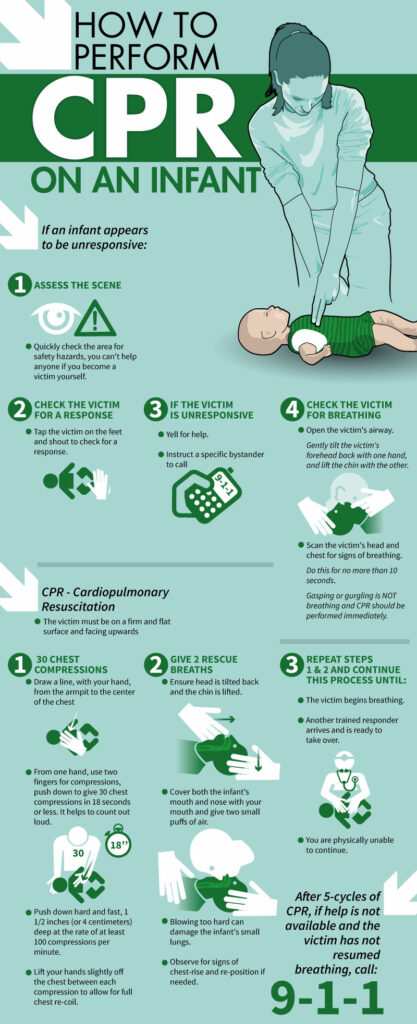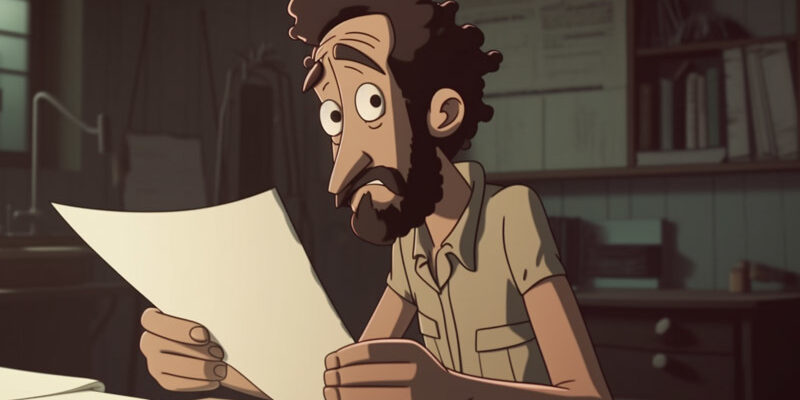The following blog article was written for Little Monsters Resale Shop
Learn How To Save A Life
Although we all hope and pray that we’ll never have to use cardiopulmonary resuscitation (CPR) on a child or infant, it’s of the utmost importance that we know the signs and steps so that we can help out in the event of a breathing emergency.
The amount of time you have to save a life or prevent permanent brain damage is quite minimal and time is not on your side. In this article, you’ll be able to learn and review the steps to perform CPR on a baby who may be choking or who has stopped breathing.
What Is CPR?
Cardiopulmonary resuscitation, commonly known as CPR, is an emergency procedure that combines chest compression often with artificial ventilation in an effort to manually preserve intact brain function until further measures are taken to restore blood circulation and breathing.
CPR procedures are different for adults, children, and infants. For adults, common CPR involves compression of the chest between 5cm (2.0 in) and 6cm (2.4 in) deep at a rate of at least 100-120 compressions per minute.
The rescuer may also provide artificial ventilation by either exhaling air into the subject’s mouth or nose (mouth-to-mouth resuscitation) or using a device that pushes air into the subject’s lungs (mechanical ventilation). Current recommendations place emphasis on high-quality chest compressions over artificial ventilation.
CPR alone is unlikely to restart the heart, as its main purpose is to restore the flow of oxygenated blood to the brain and heart. The objective of giving someone CPR is to delay tissue death. Additionally, it will extend the brief window of opportunity for a successful resuscitation without permanent brain damage. Generally, CPR is continued to be administered until the person suffering has a return of spontaneous circulation, or is declared dead by a medical technician.
Immediate CPR followed by defibrillation within 3–5 minutes of sudden air loss or cardiac arrest dramatically improves the rate of survival. While returning to 100% normal functioning is not always a guarantee, this life-saving procedure is definitely one that every parent should know how to perform.

Before You Give A Child or Infant CPR
1) Check the scene, the surroundings, and the child or infant. Make sure the scene is safe for everyone involved and then tap the child on the shoulder while shouting “Are you OK?” to ensure that he or she does, in fact, need assistance. For infants, flick the bottom of the foot in an attempt to elicit a response.
2) Call 911 immediately if the child is responsive. If the child does not respond, ask a bystander to call 911 and then begin to administer approximately 2 minutes of care.
3) Attempt to open the airway. With the child lying on his or her back, tilt the head back slightly and lift the chin.
4) Check for breathing. Listen carefully, for no more than 10 seconds, for sounds of breathing. Please note that occasional gasps are not considered to be breathing. Infants typically show periodic breathing, so changes in the breathing pattern may be normal.
5) Deliver 2 rescue breaths if the child or infant isn’t breathing. With the head tilted back slightly and the chin lifted, pinch the child’s nose shut, make a complete seal by placing your mouth over the child’s mouth and breathe into the child’s mouth twice. For infants, use your mouth to make a complete seal over the infant’s mouth and nose, then blow in for one second to make the chest clearly rise. Now, deliver two rescue breaths.
6) If the child or baby is unresponsive to the rescue breaths, begin CPR immediately.
Performing CPR On An Infant Or Child
1) Kneel beside the child or baby.
2) Push hard and push fast. For children, place the heel of one hand on the center of the chest, then place the heel of the other hand on top of the first hand, and lace your fingers together. Deliver 30 quick compressions that are each about 2 inches deep. For infants, use 2 fingers to deliver 30 quick compressions that are each about 1.5 inches deep.
3) Give 2 rescue breaths (see instructions above).
4) Keep going. Continue these infant or child CPR steps until you see obvious signs of life, an AED is ready to use, another trained responder or EMS professional is available to take over, you’re too exhausted to continue, or the scene becomes unsafe.
Get Your Certification Card
For further information, we recommend you find a place in the Reno, Sparks, or Carson City area to get certified. There are plenty of teachers available. Classes are only a few hours and are relatively inexpensive. Cost is usually about $40-$50. Certification typically lasts for 2 years.
This training could save a life! Be a hero. Get certified so you’re ready if and when an emergency happens.

Are You Looking for Assistance with a Blog Campaign?
If you’re looking for an experienced and trustworthy team to execute a successful blog campaign, the staff at Wonder Web Development is here to help. We take pride in our work, care about our clients and love to see you succeed. After all, your success is a reflection on us.
Interested in learning more? Please feel free to contact the pros at Wonder Web Development for a free consultation. We can’t wait to hear from you!
You can reach us by phone at 775-527-3618 or by email at Consults@WonderWebDevelopment.com.






